What lasts for a long time must probably just be good. After a long wait, the time has finally come and the Aqua Computer kryographics NEXT 2080 Ti, announced at the end of 2018, completed my test run at the weekend and passed with flying colours. Without wanting to spoil: the patience was really worth it! Even if a few trivialities still signal a need for clarification – the cooler cools as if there is no tomorrow and fits like a one. But always beautiful in turn…
In my two articles "GeForce RTX 2080 Ti – Why water cooling is more important than manual overclocking and this does not bring much" and especially "Nvidia GeForce RTX 2080 Ti Founders Edition water-cooled? Forget it, here's the much faster alternative!" I used to go into very detailed detail about the cooling problem and the advantages of a potent water cooling system.
In addition, with the EK Waterblocks EK RTX 2080 Ti RGB, the Phanteks Glacier G2080Ti and the Watercool Heatkiller IV Fullcover, I already had three more coolers in the test, all of which were not failures. Especially the Watercool Heatkiller IV has set the bar for the current test fizzy high and it will be interesting to see how these two copper giants, each weighing 1250 grams, will beat each other in a direct duel.
Since the Otto Normal customer can check the GPU temperatures with selection tools at most, I offer in this article a usual elaborate infrared test with the video of the heat flow and the temperature development, because at the latest with the memory and the There are sometimes extreme differences in voltage converters, which are difficult to determine with normal tests. Testing is always carried out with a maximum power consumption of just under 380 watts for the board of the graphics card and a constant water temperature of 20°C, as well as a room temperature of 22°C and the same Witcher 3 gaming loop in Ultra HD.
All the companies requested have also delivered test samples so far, even if it sometimes took a little longer. Unfortunately, Bitspower has so far, in contrast, and despite direct contact to Asia, completely refused to test. The cooler offered should work equally for all RTX models with reference board, which would have been quite interesting. However, it can at least be assumed that due to such a wide range of supported layouts, the performance may have fallen a bit by the wayside. Perhaps this is also the reason why sampling was not carried out in the end.
Unboxing, scope of delivery and assembly
The completely assembled water block, screws, three 0.5 mm thermal guide pads, as well as two plugs and (far too little) thermal conductive paste are supplied. THE RGB lighting is integrated in the acrylic cover. Unfortunately, RGBpx is a gadget-to-address RGB port that can be connected to Aqua Computer CONTROL units, but not directly to every motherboard with RGB control, which is a great pity.
At least an adapter to the most common 12V ports shouldn't fail. In the accessories you only get the RGBpx cable and a connection to another RGBpx device. Some Asus motherboards now have such a connection, including various products from Corsair, NZXT or InWin. But a backward-compatible option would be really nice. Perhaps the manufacturer still has an insight? (Update: Upon request, Aqua Computer announced that it would offer a solution in the foreseeable future)
What is missing in the accessories, however, are an H6 hexagonal key for the plugs and sufficient thermal paste. Because a special feature of the kryographics NEXT is the otherwise very pleasing circumstance, that one has placed particular emphasis on the exact dimensions, as well as the fit accuracy. This makes it possible to thermally connect the GPU and the memory directly to the cooling block using thermal paste. From a cooling performance point of view, this is a significant increase in quality, but it is also not always so easy to implement. And who can do it or who often does not trust the end user, because it is not quite so without it (DAU-Alarm).
The one from approx. 1.8 kg of raw material in Germany CNC-milled solid copper cooling block is nickel-plated and, as already mentioned, weighs approx. 1250 grams. the spacers are fit tight enough and are not as easy to turn out as the EK RTX 2080 Ti from EK Water Blocks. The included small Phillips screws are ok, but the head could have been a little bigger.
The manufacturer attaches a mini-tube of a Thermal-Grizzly product with a spatula, which is sufficient for the GPU. What the total of 11 memory modules are to be coated with is somehow in the stars. The supplied paste left a shared impression on me. It is much firmer (viscous) than the usual cryonaut (which also pulls the famous "threads" when pulling away), which suggests either a different composition or a certain aging. Since you don't get far with this paste anyway, you should order a proper portion anyway.
The thin thermal pads logically have a lower thermal resistance than the 1 mm pads, which are unfortunately used so often, but require a very tailor-made production. Any tolerance violation would therefore be punished immediately during assembly. But here, too, the pads have to contend with a certain "breadiness" that I don't really know about the blue pads.
The removal of the two protective foils was the thinner foil for a game of patience with ripping surfaces. The performance should not suffer, but one has to be unusually careful to work. But I suspect, to the rescue of the manufacturer, that my pre-delivered copy was accidentally enclosed with an accessory bag from the farthest corner of the warehouse.
One looks at the board the now more than 10 carried out montages unfortunately a bit, because I have tested various other prototypes in between. If a complete basic cleaning for the optical overkill were to be carried out each time, the protective varnish on the board would already be off. However, if you don't want to be a smudge in private, you can glue the whole edges with the paste with insulating tape or Tesa film or apply the paste to the heat sink straight away.
With reasonably good skills, you've done everything in less than 30 minutes. Also the connection to the terminal and the RGB output of the motherboard are not a witch's work, but with the latter you would have to resort to an Asus model, which my test system unfortunately does not give. That's why the cooler stays dark for the night. But it also has its charm.
Finally, there is now another front and rear view of the screwed-together cooler as a picture gallery:
Technical data and manual
Before I put this conversion into operation on the next page and measure it, quickly see everything tabularly for all readers at a glance:
Technical data:
Base body: copper, nickel-plated
Lid: acrylic glass
Frame: Anodized aluminium
Jetplate: Stainless steel
Connection terminal: Acetal
Delivery:
Cooler without connections (thread G1/4)
Two locking screws G1-4
Thermal paste Thermal Grizzly Cryonaut, approx. 0.5 grams in syringe
Plastic spatula
Thermal pad
Fixing material
RGBpx connection cable 50 cm
RGBpx connection cable for ASUS motherboards with connectivity for addressable RGB LEDs
In the manual I discovered a small error, because the yellow marked areas should actually be green. The rest, however, is accustomed to self-explanatory
Manual kryographics NEXT
Test system and measurement methods
I have already described the test system and the methodology in the basic article "How we test graphics cards, as of February 2017" (English: "How We Test Graphics Cards") in detail and therefore, for the sake of simplicity, now only refers to these detailed Description. So if you want to read everything again, you are welcome to do so.
If you are interested, the summary in table form quickly provides a brief overview:
| Test systems and measuring rooms | |
|---|---|
| Hardware: |
Intel Core i7-8700K @5GHz MSI Z370 Gaming Pro Carbon OC G.Skill TridentZ DDR4 3600 1x 1 TByte Toshiba OCZ RD400 (M.2, System SSD) 2x 960 GByte Toshiba OCZ TR150 (Storage, Images) Be Quiet Dark Power Pro 11, 850-watt power supply |
| Cooling: |
Alphacool Ice Block XPX 5x Be Quiet! Silent Wings 3 PWM (Closed Case Simulation) Thermal Grizzly Kryonaut (for cooler change) |
| Housing: |
Lian Li PC-T70 with expansion kit and modifications |
| Monitor: | Eizo EV3237-BK |
| Power consumption: |
non-contact DC measurement on the PCIe slot (Riser-Card) non-contact DC measurement on the external PCIe power supply Direct voltage measurement on the respective feeders and on the power supply 2x Rohde & Schwarz HMO 3054, 500 MHz multi-channel oscillograph with memory function 4x Rohde & Schwarz HZO50, current togor adapter (1 mA to 30 A, 100 KHz, DC) 4x Rohde & Schwarz HZ355, touch divider (10:1, 500 MHz) 1x Rohde & Schwarz HMC 8012, digital multimeter with storage function |
| Thermography: |
Optris PI640, infrared camera PI Connect evaluation software with profiles |
| Acoustics: |
NTI Audio M2211 (with calibration file) Steinberg UR12 (with phantom power for the microphones) Creative X7, Smaart v.7 own low-reflection measuring room, 3.5 x 1.8 x 2.2 m (LxTxH) Axial measurements, perpendicular to the center of the sound source(s), measuring distance 50 cm Noise in dBA (Slow) as RTA measurement Frequency spectrum as a graph |
| Operating system | Windows 10 Pro (1809, all updates) |















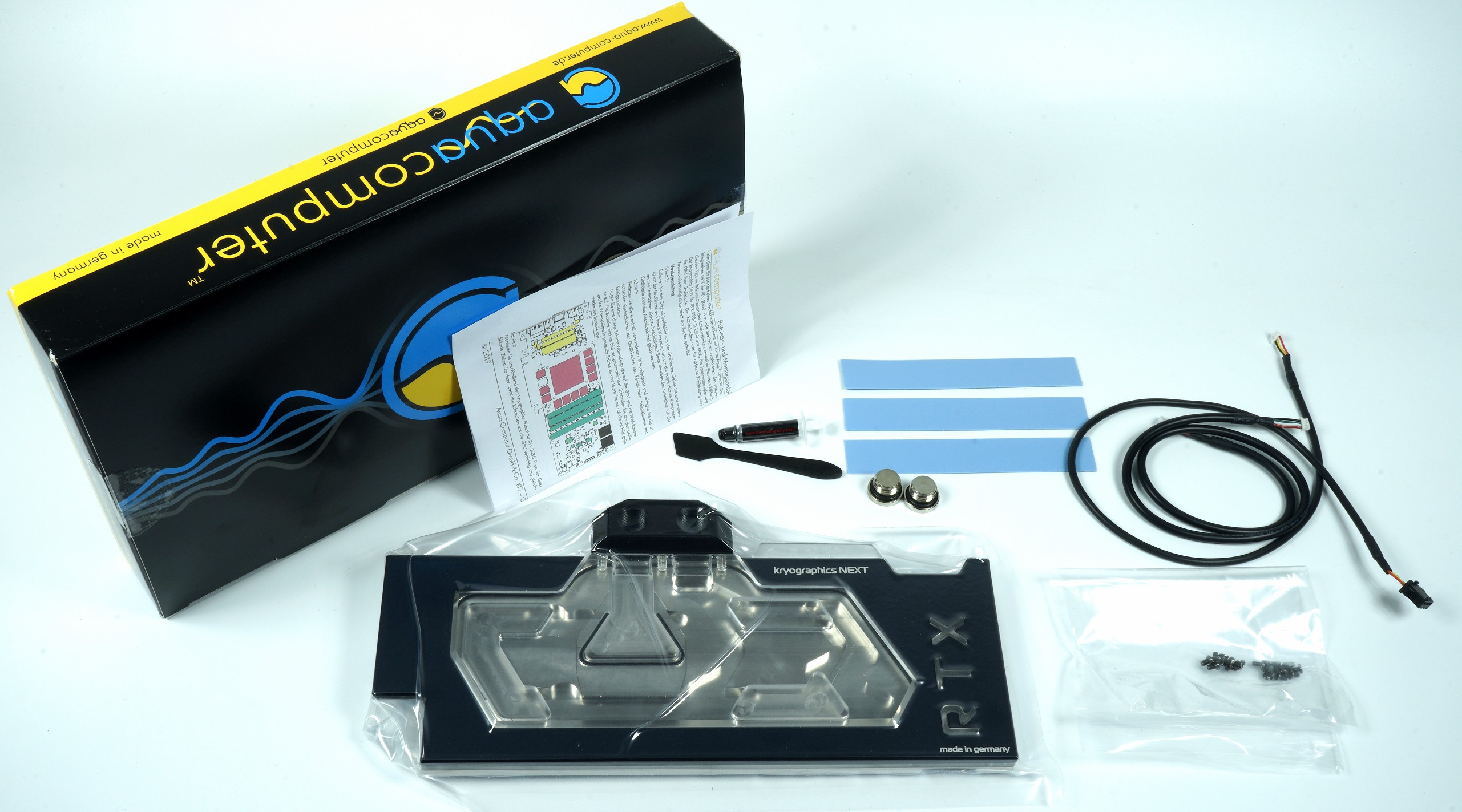
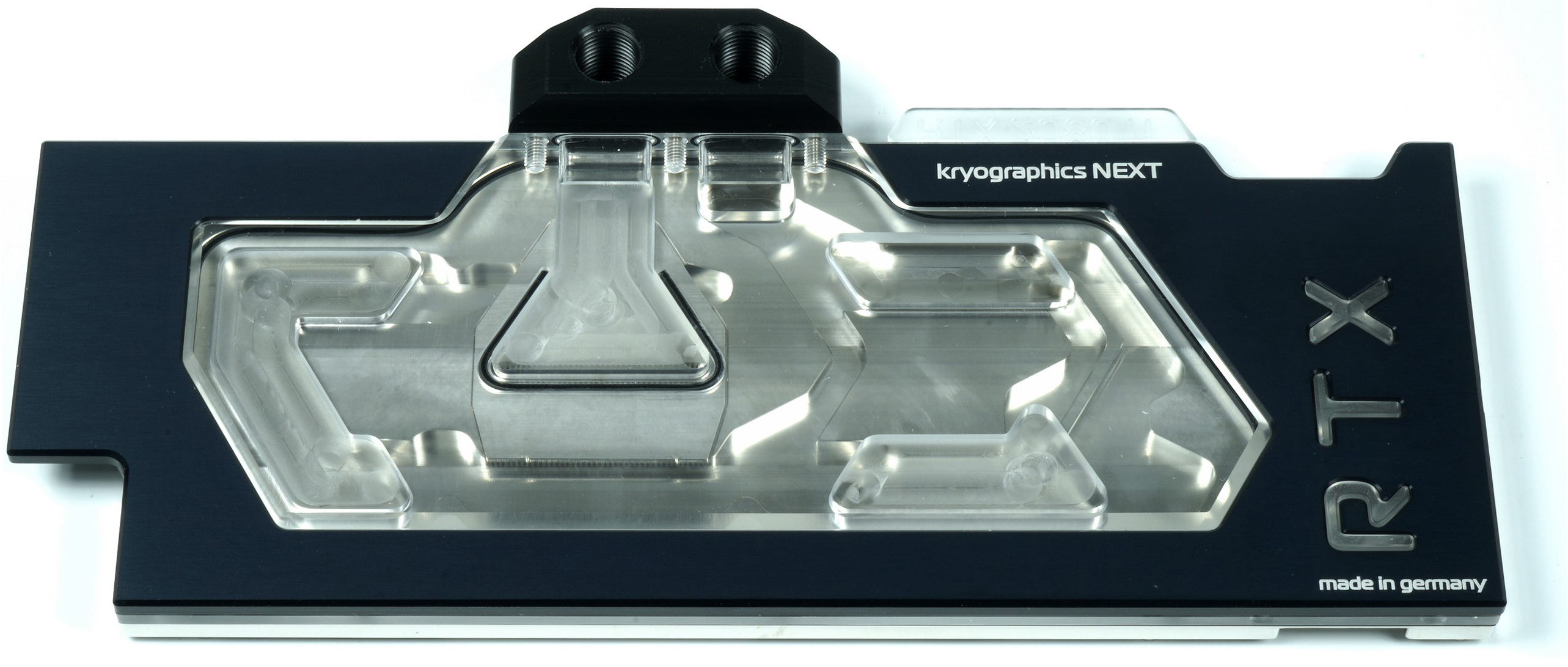
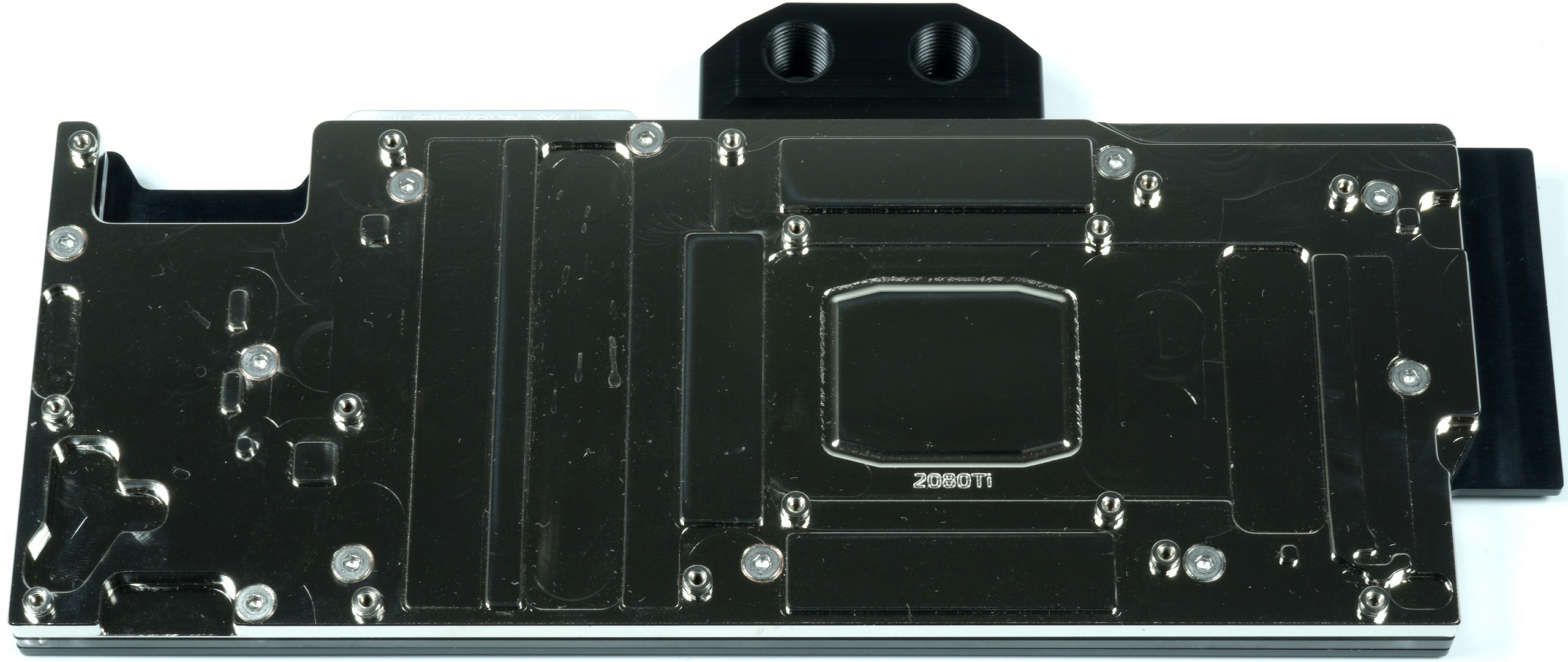
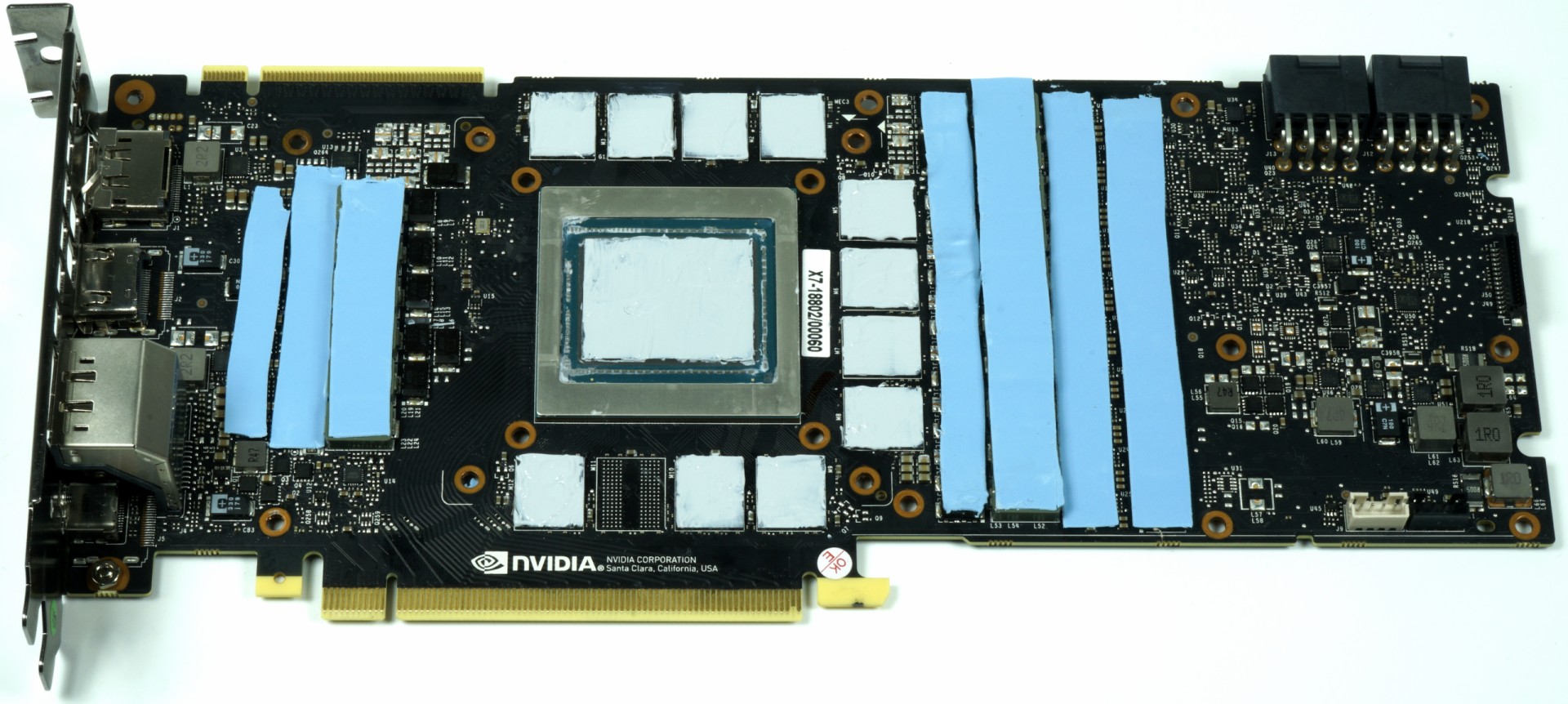



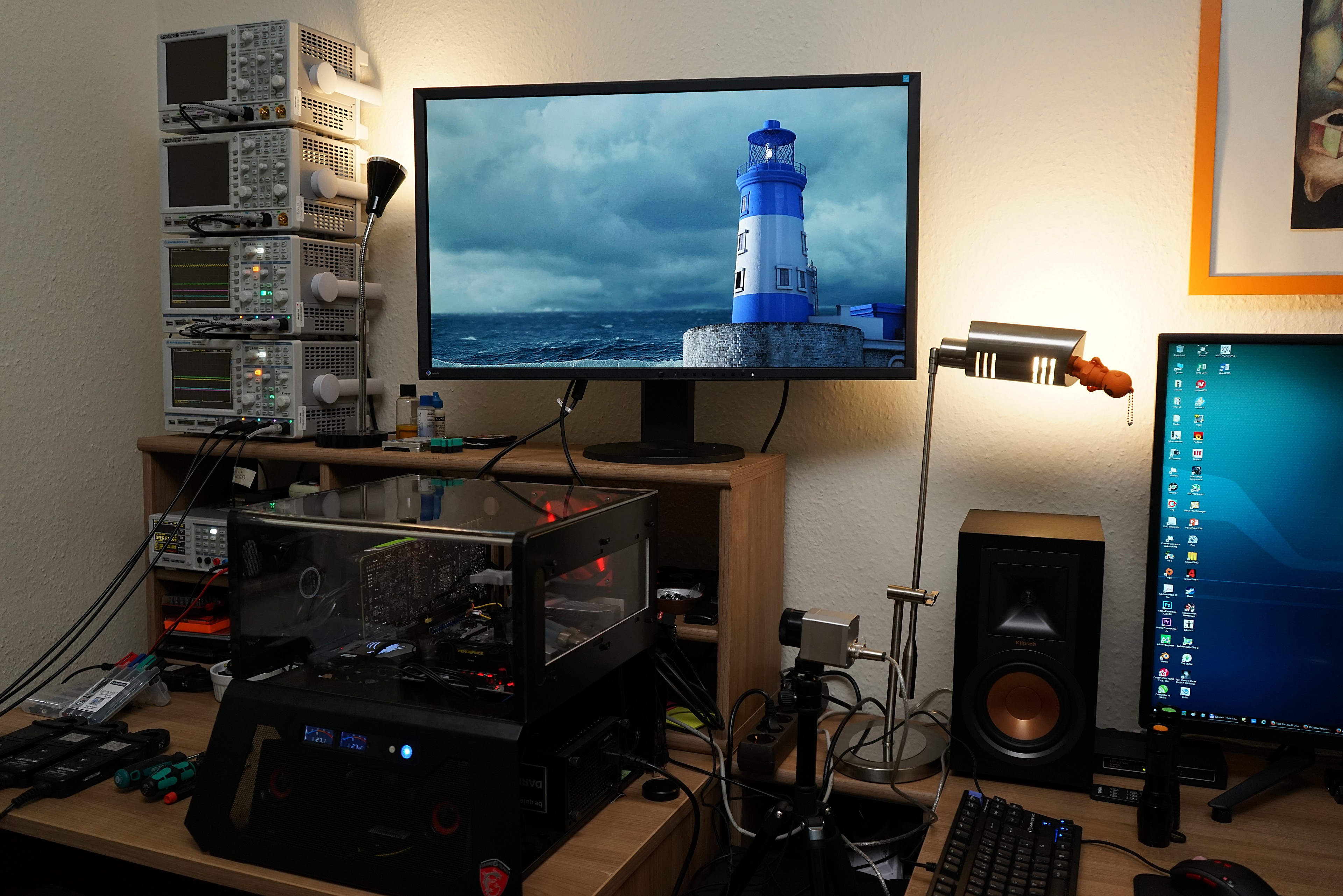



















Kommentieren